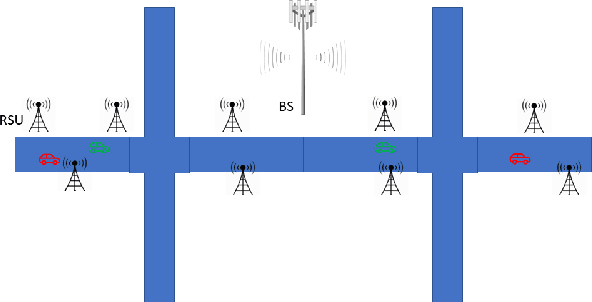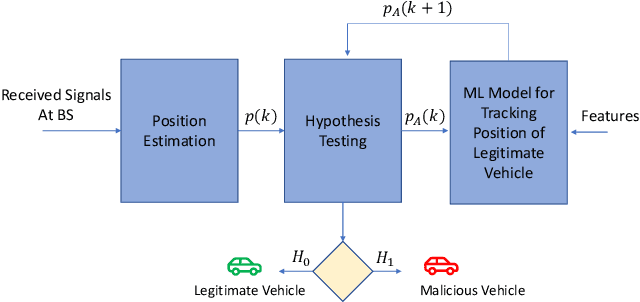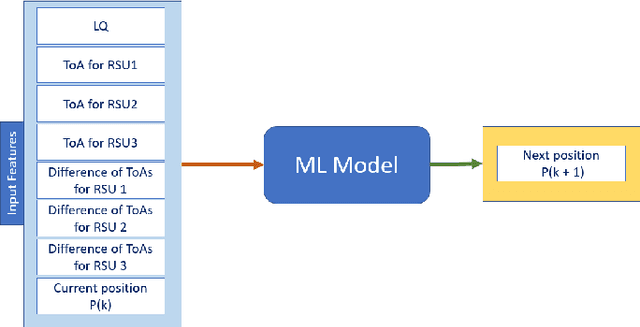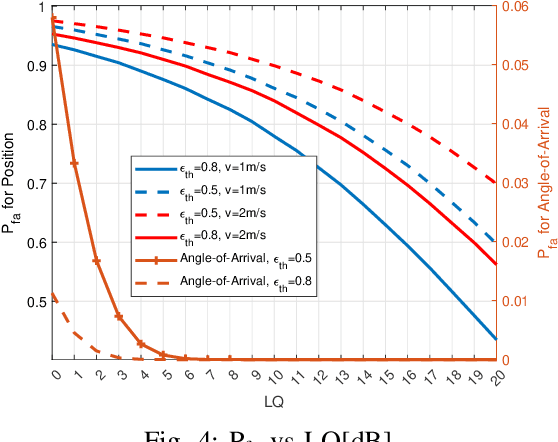Hala Amin
On the Potential of Re-configurable Intelligent Surface (RIS)-assisted Physical Layer Authentication (PLA)
May 02, 2024Abstract:Re-configurable Intelligent Surfaces (RIS) technology is increasingly becoming a potential component for next-generation wireless networks, offering enhanced performance in terms of throughput, spectral, and energy efficiency. However, the broadcast nature of RIS-assisted wireless communication makes it vulnerable to malicious attacks at the physical layer. At the same time, physical layer authentication is gaining popularity as a solution to secure wireless networks, thwarting different attacks such as cloning, spoofing, and impersonation by using the random features of the physical layer. In this paper, we investigate RIS-assisted wireless communication systems to unlock the potential of using RIS for physical layer authentication (PLA). In particular, we exploit two distinct features of the physical layer: pathloss and channel impulse response (CIR) for PLA in RIS-assisted wireless communication. We construct hypothesis tests for the estimated features and derive closed-form error expressions. Further, we consider the critical error, i.e., missed detection, as our objective function to minimize by optimizing the phase shift of the RIS pannel. We compare the performance of our proposed mechanisms with PLA schemes using the same features but with no RIS. Furthermore, we thoroughly evaluate our proposed schemes using performance metrics such as the probability of false alarm (PFA), the probability of missed detection (PMD), and the receiver operating characteristic (ROC) curves. The results demonstrate a clear positive impact of RIS on PLA, as it effectively reduces PMD values to zero when determining the optimal phase shift.
Hybrid PLS-ML Authentication Scheme for V2I Communication Networks
Aug 28, 2023



Abstract:Vehicular communication networks are rapidly emerging as vehicles become smarter. However, these networks are increasingly susceptible to various attacks. The situation is exacerbated by the rise in automated vehicles complicates, emphasizing the need for security and authentication measures to ensure safe and effective traffic management. In this paper, we propose a novel hybrid physical layer security (PLS)-machine learning (ML) authentication scheme by exploiting the position of the transmitter vehicle as a device fingerprint. We use a time-of-arrival (ToA) based localization mechanism where the ToA is estimated at roadside units (RSUs), and the coordinates of the transmitter vehicle are extracted at the base station (BS).Furthermore, to track the mobility of the moving legitimate vehicle, we use ML model trained on several system parameters. We try two ML models for this purpose, i.e., support vector regression and decision tree. To evaluate our scheme, we conduct binary hypothesis testing on the estimated positions with the help of the ground truths provided by the ML model, which classifies the transmitter node as legitimate or malicious. Moreover, we consider the probability of false alarm and the probability of missed detection as performance metrics resulting from the binary hypothesis testing, and mean absolute error (MAE), mean square error (MSE), and coefficient of determination $\text{R}^2$ to further evaluate the ML models. We also compare our scheme with a baseline scheme that exploits the angle of arrival at RSUs for authentication. We observe that our proposed position-based mechanism outperforms the baseline scheme significantly in terms of missed detections.
 Add to Chrome
Add to Chrome Add to Firefox
Add to Firefox Add to Edge
Add to Edge